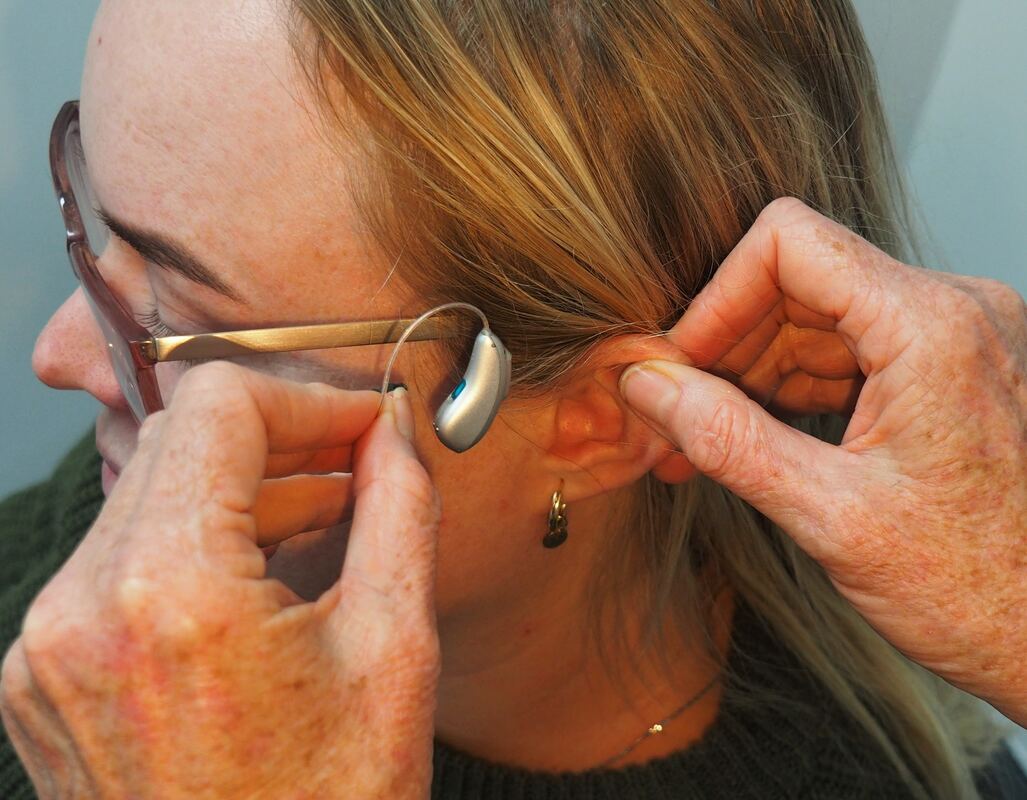|
A Hearing Instrument Specialist (HIS) is a qualified hearing care professional who specializes in hearing health evaluations, administering hearing tests, and providing solutions for your hearing loss, which may include hearing aids or assistive listening devices.
Other terms for HIS in the U.S. are: Hearing Aid Specialist Hearing Aid Dispensers Hearing Aid Dealers/Fitters After performing a hearing test, your hearing care professional will determine the range of hearing loss and if hearing aids are the best option to treat your hearing loss or if you should look into different options. If you need an option other than hearing aids, our office will refer you to a physician for another opinion. If you need hearing aids, your provider will fit you with the proper technology during a hearing aid trial. There will be a follow-up planned. This plan includes best practices for successful hearing benefits, your HIS making appropriate adjustments tailored to your needs, and receiving hearing aid checks regularly to ensure they are cleaned and working properly. Your HIS keeps up with learning the latest best practices while adjusting the devices to your daily environments, hearing difficulties, and personal hearing profile to find a plan you will benefit from. Interactions and communication with family, friends, colleagues, healthcare professionals, and anyone else you encounter can be less challenging. You can generally find more HIS in suburban and rural areas than other hearing care providers. They may have a satellite or community-based office, help with people in assisted living facilities, or even visit your home. What Qualifications does a Hearing Instrument Specialist have? Your hearing instrument specialist should be licensed and registered by their state. In order to attain and keep their licensure/registration, they must complete a hands-on apprenticeship program or have an associate degree in hearing aid sciences, and pass a written and practical hands-on examination. This ensures they are competent and practice safety in their professions. Maintaining their license/registration includes completing additional hours of continuing education. The U.S. Department of Labor, Department of Veterans Affairs, Office of Policy and Management, and state Medicaid Programs recognize them as hearing healthcare services. Board certification is another way to showcase their commitment to advancing their practice. This is an award that the National Board for Certification in Hearing Instrument Sciences (NBC-HIS) gives to someone with at least two years of independent practice, who passed the National Competency Examination, has completed 24 hours of continuing education every three years, and abides by the NBC-HIS Code of Ethics. This designation is maintained by those who are certified through a recertification process every three years. Additional Services provided by Hearing Instrument Specialists They have been educated, trained, and licensed to:
If you or a loved one experiences hearing loss, please contact Pure Sound Hearing for a complimentary hearing test and consultation. Have you ever removed your hearing aid tubing to clean it off and accidentally tore it?
If you’re at home or not near your hearing aid provider, here are some tips on removing your tubing safely.
Contact Pure Sound Hearing for help with your hearing aids, whether it’s the tubing or any other problems you come across. Hearing aids are an investment, so proper care is needed to keep them working their best. At Pure Sound Hearing, patients are provided with a warranty when purchasing hearing aids. Let’s go over what coverage you’d receive and how it works.
A hearing aids warranty is a contract signed by the customer for the hearing aid company from whom they purchase the devices to protect them if anything goes awry. Any hearing aid deterioration due to mistreatment or neglect typically won’t be protected by a warranty. Many warranties will, however, cover daily weathering. Hearing Aid Warranties Warranty coverage for hearing aids is crucial. You can get protection from hearing aids that are faulty while also protecting your investment in the product. Some people believe that hearing aid repairs require payment for any service during each visit to your hearing aid provider since there is no written contract between the user and the manufacturer or provider. Based on your hearing aid model, manufacturers offer a variety of warranty plans. These may include: Limited Lifetime Warranty This standard warranty covers all parts of your hearing aids, excluding batteries and earmold fittings. Most companies have this option. It protects you from any defects in the materials or design. It does not cover repair expenses caused by abuse, accidents, or misuse. Basic and Limited Warranty This type of warranty covers all parts of the hearing aids, excluding batteries. It also does not cover damage caused by average wear and tear, like a scratched casing, dents, or other physical/surface deterioration that doesn’t hinder the hearing aids’ performance. This warranty does not cover repair expenses caused by abuse, accidents, or misuse. Complete Warranty This warranty covers all parts and labor when there is general wear and tear. It includes casings that become scratched, dents, physical/surface deterioration that doesn’t hinder the hearing aids’ performance, and damage caused by accidents. The cost of repairs caused by water damage or intentional destruction is not covered. Warranties from Manufacturers After purchasing hearing aids, your provider will give you a manufacturer’s warranty. A warranty from the manufacturer is a certification ensuring that they can sell their products to customers. Find out if your device has a certified warranty and what to expect. Here are three different types of hearing aid warranties from manufacturers:
Third-party Warranties This warranty uses third parties, like an insurance company. It is for hearing aids under five years old. This warranty provides unlimited replacements for your device. The best warranties last at least five years. Repairs or replacements are part of the coverage for your hearing aids. Look over Pure Sound Hearing’s care plans for our warranty coverage. If you are unsure about something, please ask us questions about it. Contact us at Pure Sound Hearing for a complimentary hearing test and consultation with one of our hearing aid providers. We offer hearing aid trials, purchases, and services in Elizabethtown, Lititz, and Strasburg. |
Categories
All
|
-
products
- Rexton Emerald M 8C RIC
- Rexton inoX CIC 8C
- Rexton Mosaic M 8C BTE
- Rexton Mosaic P 8C BTE
- Rexton Stellar RIC 8C
- Rexton Sterling 8C CIC / IIC
- Rexton Sterling 8C ITE / ITC
- Rexton Emerald XS 8C RIC
- Rexton Emerald S 8C RIC
- Signia Active Pro
- Signia CROS AX
- Signia CROS Hearing Solutions
- Signia Insio Charge&Go AX
- Signia Insio Nx IIC/CIC
- Signia Insio Nx ITC/ITE
- Signia Intuis 3 Family
- Signia Motion Charge&Go X
- Signia Motion 13 Nx/Motion 13 P Nx
- Signia Prompt
- Signia Pure Charge&Go AX & T AX
- Signia Pure 312 AX
- Signia Pure 10 Nx
- Signia Pure 13 BT
- Signia Pure 13 Nx
- Signia Silk X
- Signia Styletto AX
- Signia Styletto X
- SERVICES >
- about
- blog
- Insurance
- contact
|
© 2023 Pure Sound Hearing Aids. All Rights Reserved.
|
Proudly powered by Weebly
-
products
- Rexton Emerald M 8C RIC
- Rexton inoX CIC 8C
- Rexton Mosaic M 8C BTE
- Rexton Mosaic P 8C BTE
- Rexton Stellar RIC 8C
- Rexton Sterling 8C CIC / IIC
- Rexton Sterling 8C ITE / ITC
- Rexton Emerald XS 8C RIC
- Rexton Emerald S 8C RIC
- Signia Active Pro
- Signia CROS AX
- Signia CROS Hearing Solutions
- Signia Insio Charge&Go AX
- Signia Insio Nx IIC/CIC
- Signia Insio Nx ITC/ITE
- Signia Intuis 3 Family
- Signia Motion Charge&Go X
- Signia Motion 13 Nx/Motion 13 P Nx
- Signia Prompt
- Signia Pure Charge&Go AX & T AX
- Signia Pure 312 AX
- Signia Pure 10 Nx
- Signia Pure 13 BT
- Signia Pure 13 Nx
- Signia Silk X
- Signia Styletto AX
- Signia Styletto X
- SERVICES >
- about
- blog
- Insurance
- contact




 RSS Feed
RSS Feed